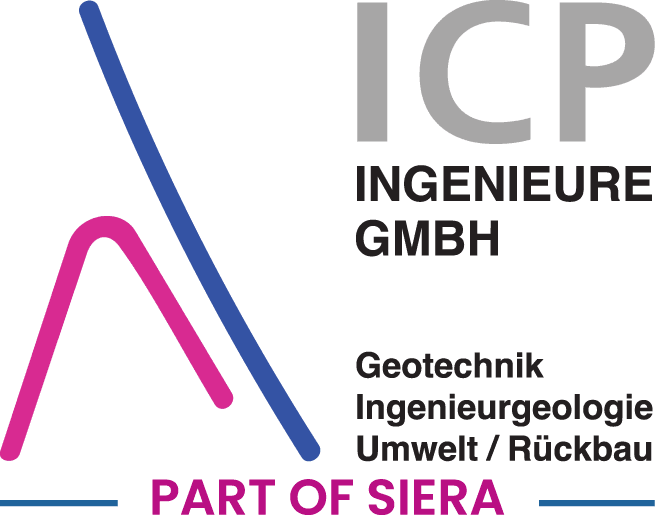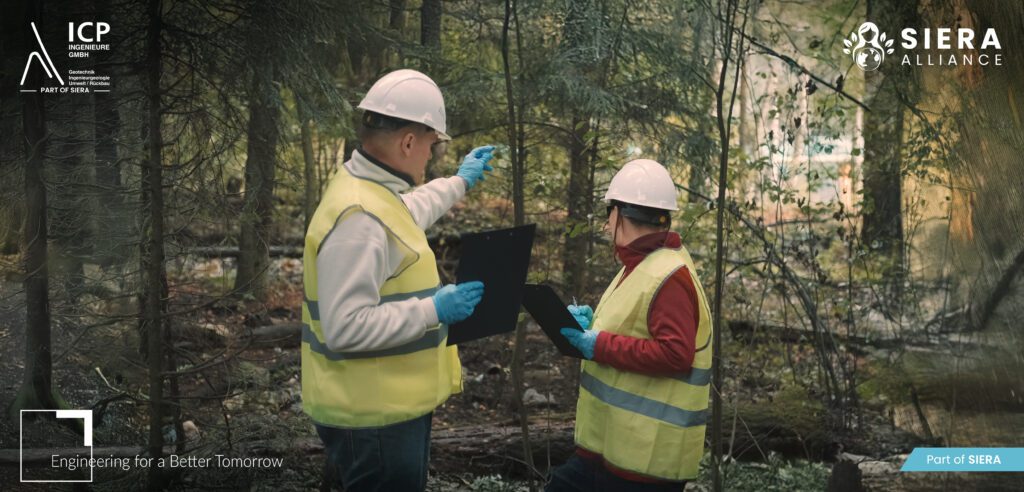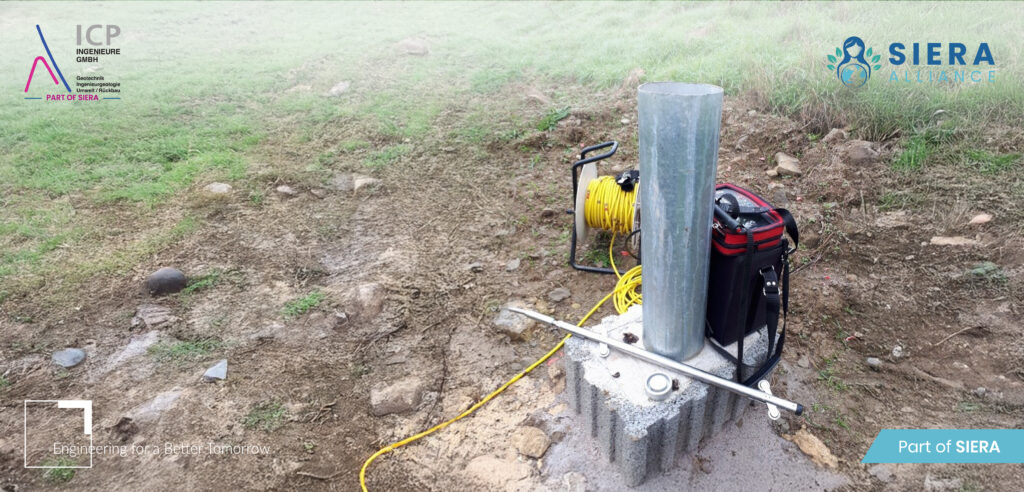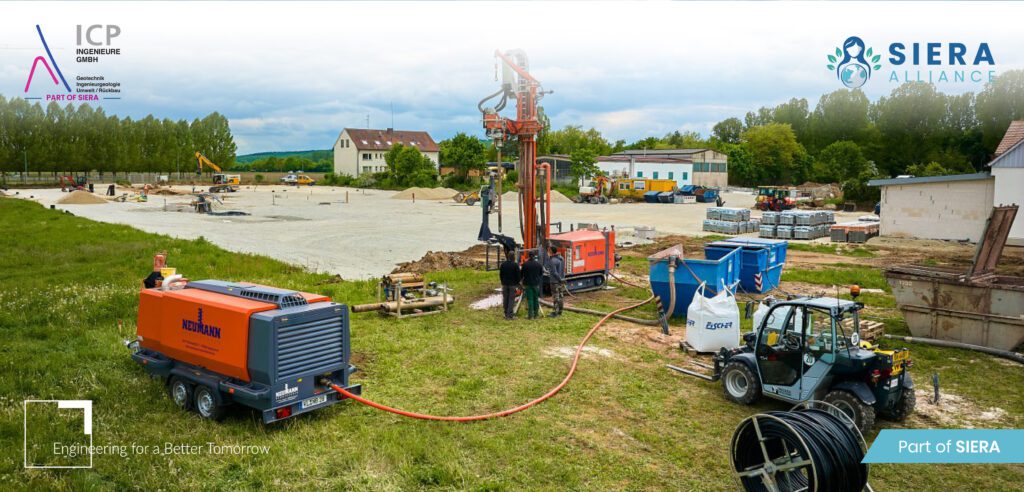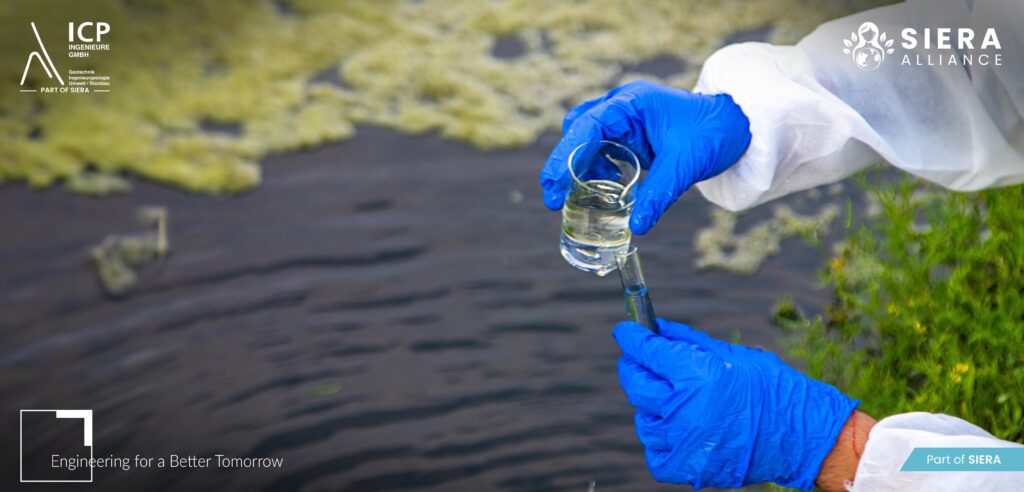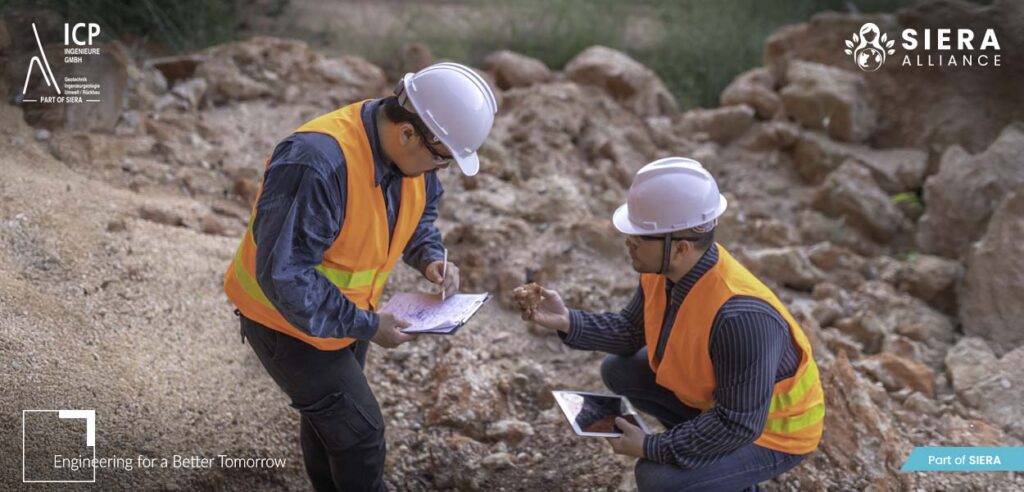In today’s world of strict environmental regulations and increasing focus on sustainability, environmental site assessments (ESAs) have become an essential step in property transactions, redevelopment, and infrastructure projects. As part of the SIERA Alliance, ICP – part of SIERA provides specialized expertise to ensure that land or buildings are free from hidden contamination risks, protecting both human health and financial investments. Whether you are a property developer, investor, or public authority, conducting an ESA ensures compliance, safeguards your project, and contributes to long-term environmental responsibility.
What Are Environmental Site Assessments?
An ESA is a structured evaluation of a site to determine whether current or historical activities may have caused environmental contamination. The objectives are threefold:
- Identify potential sources of contamination.
- Assess risks to soil, groundwater, air, and building materials.
- Recommend appropriate measures, including remediation if required.
By combining environmental risk assessments, site inspections, document reviews, and laboratory testing, ESAs answer critical questions about land safety. They are guided by global standards such as ASTM E1527, EPA guidelines, and strict local regulations.
Our Environmental Site Assessment Services
At ICP – part of SIERA, we deliver site environmental and remediation services that address every stage of the assessment process. Our services include:
- Phase I, II & III Environmental Site Assessments (detailed below)
- Contaminated land risk assessment for redevelopment and due diligence
- Hazardous building materials assessment for asbestos, PCBs, and heavy metals
- Soil contamination reports to support planning and regulatory compliance
- Tailored environmental remediation services for safe site restoration
Our team of experts combines technical expertise with innovative environmental engineering services, backed by the collaborative knowledge of the SIERA Alliance, to provide solutions that are cost-effective and compliant.
Phases of Environmental Site Assessments
Many stakeholders often ask: What are the 4 phases of environmental site assessments?
| ESA Phase | Description | Key Output |
| Phase I Environmental Site Assessment | Historical data review, regulatory records search, interviews, and visual inspection. | Identification of potential environmental concerns (RECs). |
| Phase II Environmental Site Assessment | Intrusive testing through soil, water, and air sampling; laboratory analysis. | Confirmation and extent of contamination. |
| Phase III Environmental Site Assessment | Detailed evaluation of risks, feasibility studies, and remediation design. | Roadmap for cleanup and regulatory compliance. |
| Phase IV (Remediation/Closure) | Execution of environmental remediation services such as excavation, soil washing, or in-situ treatment. | Clean site certification and compliance documentation. |
Together, phase I & II environmental site assessments are the most common in real estate and redevelopment, but Phase III and IV are critical when contamination is verified.
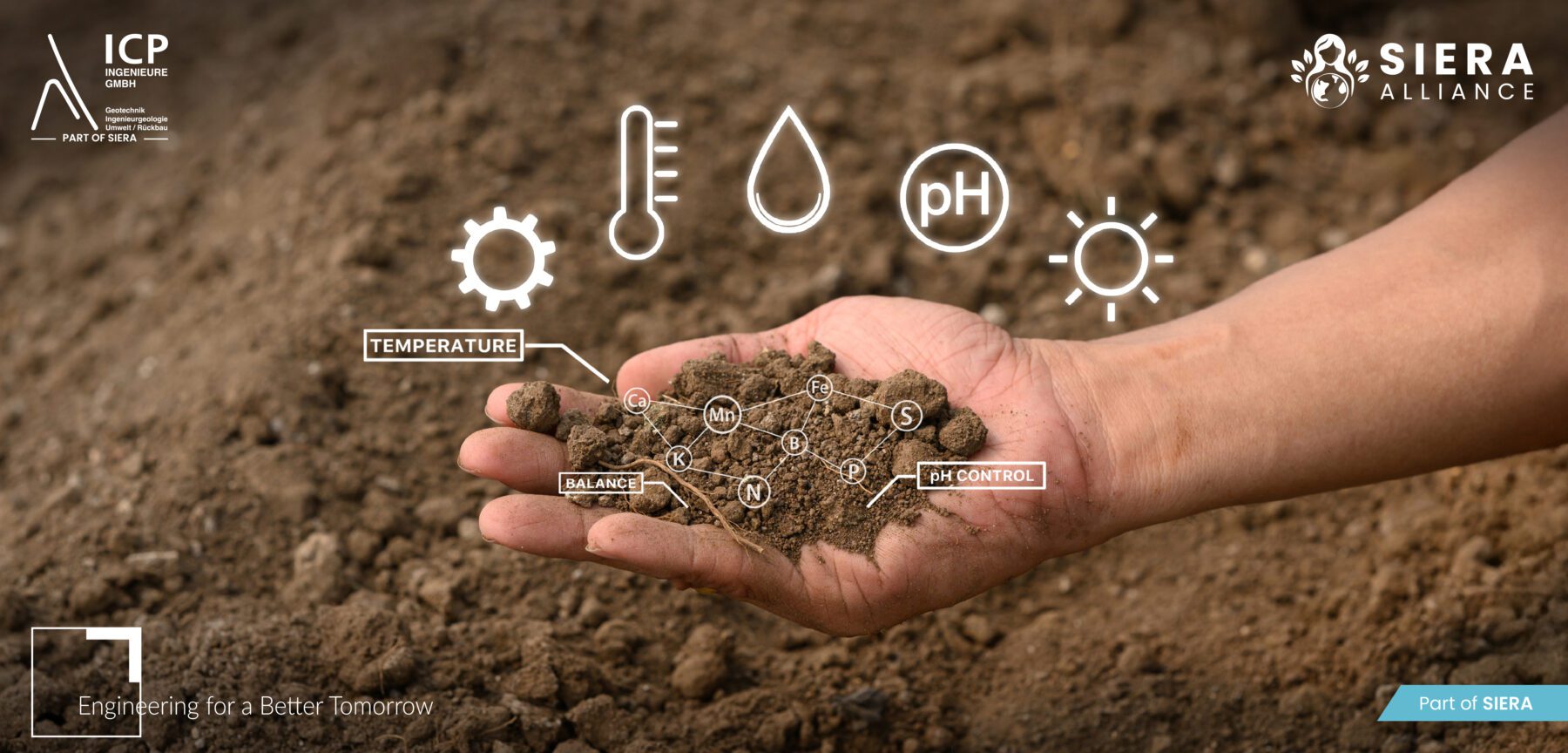
Environmental Remediation Services
But exactly what is environmental remediation services? It is the process of cleaning and restoring contaminated land, water, or structures so they can be safely reused. Depending on contamination levels, ICP – part of SIERA provides remediation methods such as:
- Excavation and disposal of polluted soil
- Groundwater treatment through pump-and-treat or in-situ technologies
- Bioremediation using microorganisms to degrade pollutants
- Hazardous building materials removal to eliminate asbestos, lead, or PCBs
Our goal is to transform contaminated sites into safe, usable spaces while meeting all environmental standards.
Industries We Serve
Environmental challenges affect nearly every sector. At ICP – part of SIERA, our environmental engineering services support:
- Commercial real estate: Pre-acquisition ESAs reduce liability for buyers and lenders.
- Industrial facilities: Routine monitoring and remediation ensure compliance with operating permits.
- Residential projects: Protecting communities by delivering safe, clean land for housing.
- Public infrastructure: Supporting roads, railways, and utilities with risk-free development land.
✔️ Checklist for Property Owners and Developers:
- Commission an ESA before purchasing land or property.
- Request a soil contamination report for redevelopment projects.
- Assess buildings for hazardous materials.
- Ensure compliance with local and international remediation standards.
- Partner with qualified experts for environmental risk assessments.
Regulatory Compliance and Standards
Conducting ESAs is not just best practice — it is often a legal requirement. Key standards include:
- ASTM E1527-21 (U.S. standard for Phase I ESAs)
- EPA Brownfield Guidelines for site reuse and remediation
- EU Soil and Groundwater Frameworks for contaminated land
- Local building and waste management laws
These regulations ensure that every contaminated land risk assessment follows a strict, transparent methodology that protects all stakeholders.
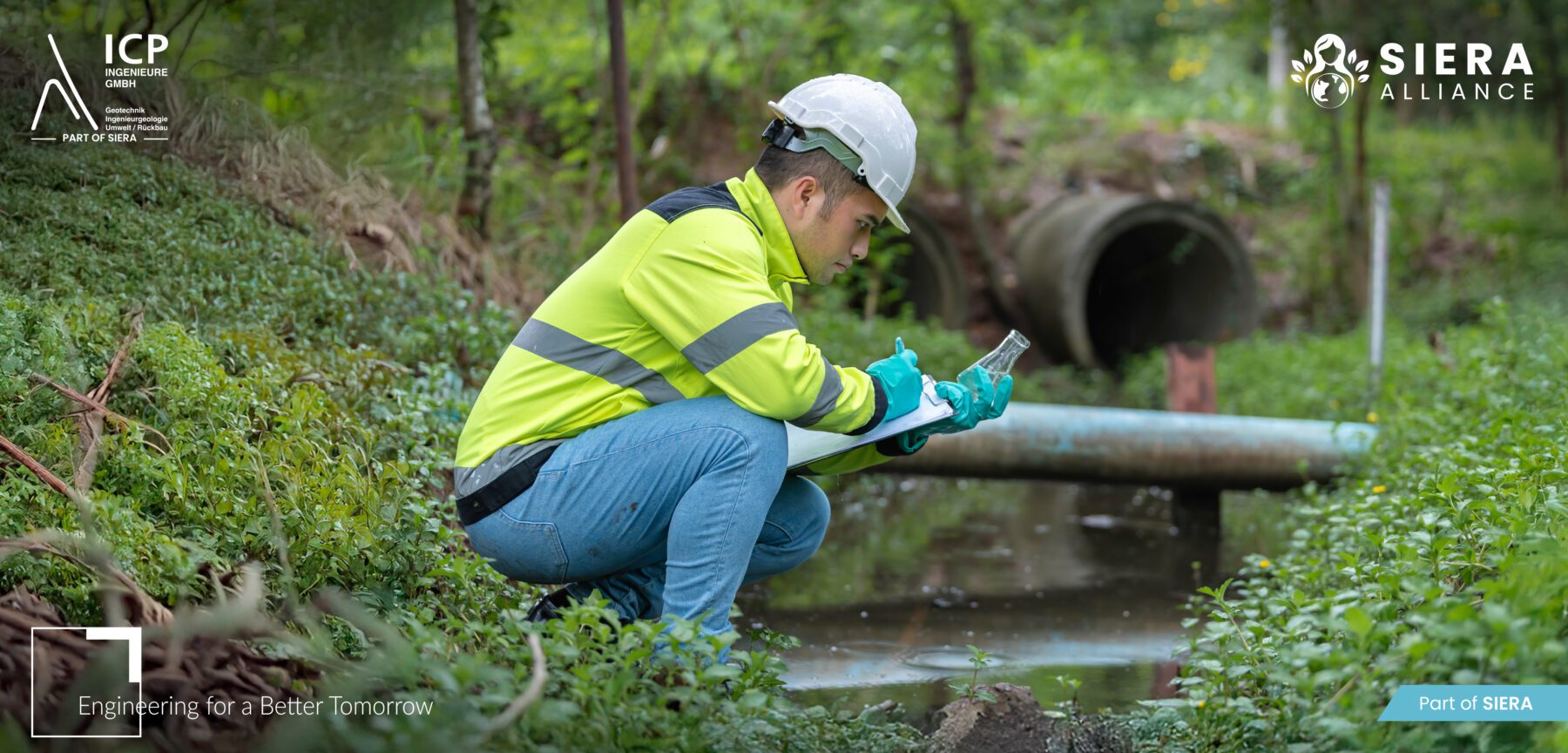

Why Choose Us?
Choosing ICP – part of SIERA means working with a partner that brings decades of experience in site environmental and remediation services. Our strengths include:
- Zertifizierte Fachkräfte mit Expertise in Phase I, II & III Environmental Site Assessments
- Advanced sampling and testing technologies
- Tailored solutions for complex contamination cases
- A strong track record across commercial, residential, and industrial projects
By being part of the SIERA Alliance , we combine local expertise with a European-wide network of knowledge, innovation, and sustainable engineering practices.
Frequently Asked Questions (FAQs)
1. What is an Environmental Site Assessment (ESA)?
An ESA is an investigation into a property’s history, current condition, and potential contamination risks.
2. What are the different phases of an Environmental Site Assessment?
There are phase I, II, and III environmental site assessments, plus a remediation stage to restore contaminated land.
3. Why are Environmental Site Assessments important?
They reduce environmental liabilities, ensure regulatory compliance, and safeguard human health.
4. What types of properties require Environmental Site Assessments?
Commercial, industrial, residential, and infrastructure projects benefit from ESAs during purchase, redevelopment, or operation.
5. What happens if contamination is found during an ESA?
A phase II environmental site assessment confirms contamination, followed by environmental remediation services tailored to the site’s needs.
6. Which regulations govern Environmental Site Assessments?
ASTM standards, EPA guidelines, EU directives, and local waste laws govern ESAs.
Contact Us
Whether you are acquiring land, redeveloping property, or operating industrial facilities, ICP – part of SIERA ensures that your projects remain safe, compliant, and sustainable. Our environmental site assessments and environmental remediation services provide clarity and confidence in every step.
👉 Contact us today, to request a consultation and secure the environmental integrity of your site.
